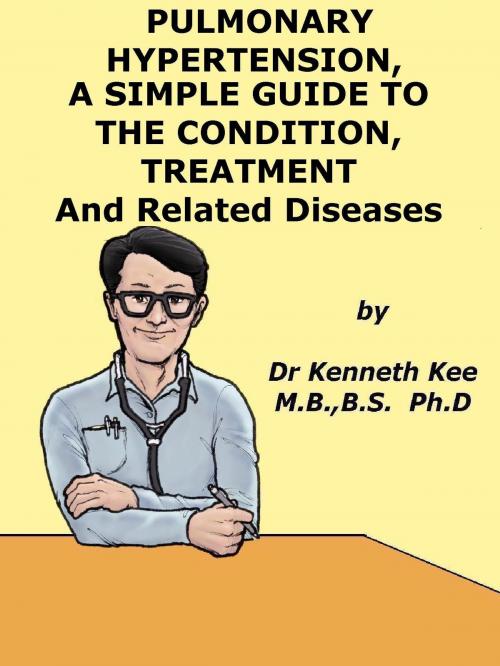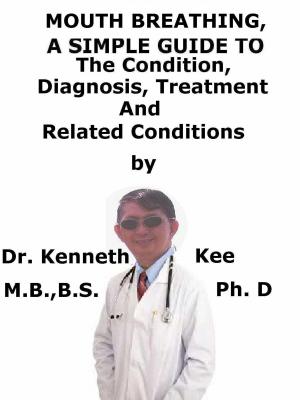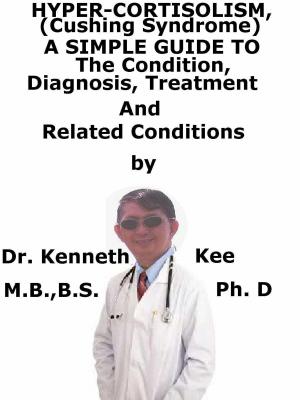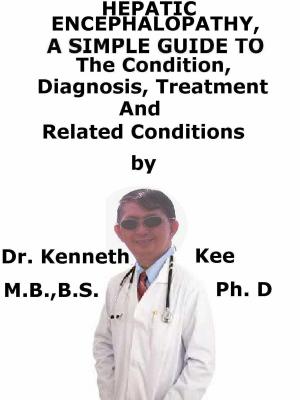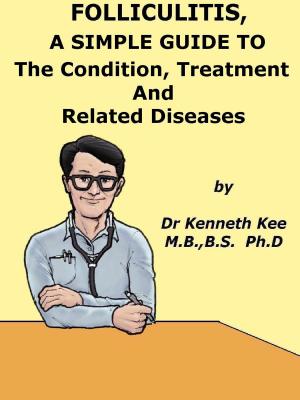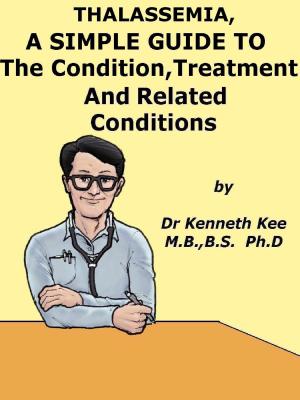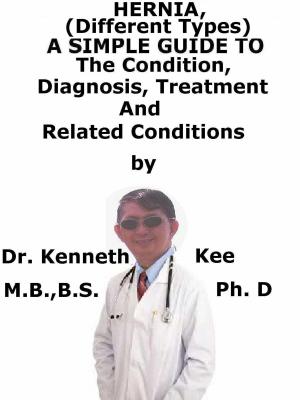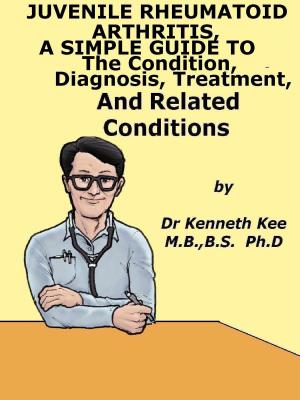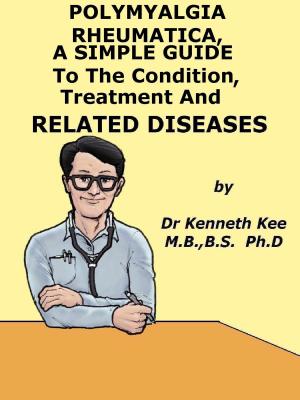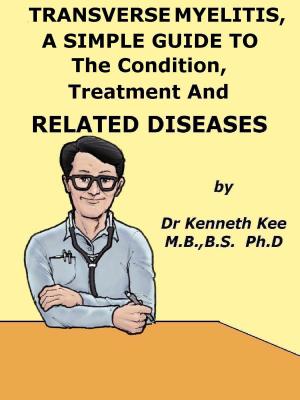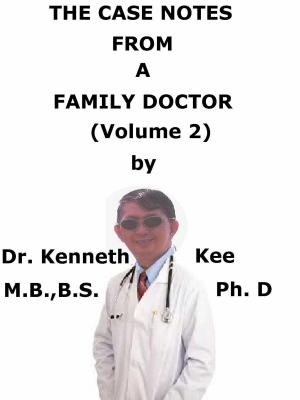Pulmonary Hypertension, A Simple Guide to the Condition, Treatment and Related Diseases
Nonfiction, Health & Well Being, Health, Ailments & Diseases, Respiratory, Medical, Specialties, Internal Medicine, Cardiology| Author: | Kenneth Kee | ISBN: | 9781310569036 |
| Publisher: | Kenneth Kee | Publication: | December 11, 2014 |
| Imprint: | Smashwords Edition | Language: | English |
| Author: | Kenneth Kee |
| ISBN: | 9781310569036 |
| Publisher: | Kenneth Kee |
| Publication: | December 11, 2014 |
| Imprint: | Smashwords Edition |
| Language: | English |
Pulmonary hypertension refers to abnormally high pressure
In the pulmonary arteries resulting in right heart failure
Unless treated pulmonary hypertension can be a life-threatening illness.
The fluid in the lung cavity prevents the air to fill the lungs to fullness
Symptoms are often the first clue to pulmonary hypertension
Shortness of breath may be due to the pulmonary congestion
Chest pain and ankle edema indicate evidence of heart failure
Chest x-ray may show enlarged heart and abnormal lung vessels pressure
Pulmonary function tests may be done to look for other lung conditions.
An ECG may be done to record the electrical activity and heart function
Treatment is to lower the pressure in the lung vessels with medications
Prostacyclin dilates the blood vessels in the lungs and improves the function
Calcium channel blockers can greatly improve the breathing.
Removal of ankle edema is with diuretic passing of urine
Digoxin can be used to make the heart pump more efficiently
Surgical removal of blood clots can cure the pulmonary hypertension effectively
-An original poem by Kenneth Kee
Interesting Tips about the Pulmonary Hypertension
A Healthy Lifestyle
-
Take a well Balanced Diet
-
Pulmonary hypertension can be treated with medications to lower the pressure in the lung vessels and to make the heart work more efficiently.
Medications:
a. Prostacyclin dilates the blood vessels in the lungs.
b. Calcium channel blockers (such as nifedipine) can greatly improve the symptoms and survival of perhaps 20% of patients (those who respond well to vasodilators).
c. Bosentan blocks one of the proteins (endothelin) that constricts blood vessels in pulmonary hypertension.
d. Anticoagulants “thin” the blood to prevent clot formation in the blood vessels.
e. Digoxin can be used to make the heart pump more efficiently.
f. Diuretics can help the kidney eliminate extra fluid.
Oxygen Therapy:
Supplemental oxygen can help some patients feel better.
Surgical Therapy:
a. A thromboendarterectomy can remove big clots in the lungs of select patients with a form of the disease caused by clots in the large vessels of the lungs (chronic thromboembolic pulmonary hypertension).
Thromboendarterectomy effectively cures such patients of pulmonary hypertension.
b. Transplantation of lung or of a heart and lung.
- Keep bones and body strong
Bone marrow produces our blood
Eat foods rich in calcium like yogurt, cheese, milk, and dark green vegetables.
Eat foods rich in Vitamin D, like eggs, fatty fish, cereal, and fortified milk.
Eat food rich in Vitamins B and C such as green vegetables and fruits
Zinc and other minerals are important to the body
- Get enough rest and Sleep
Avoid stress and tension
- Exercise and stay active.
It is best to do weight-bearing exercise such as walking, jogging, stair climbing, dancing, or lifting weights for 2½ hours a week.
One way to do this is to be active 30 minutes a day at least 5 days a week.
Begin slowly especially if a person has not been active.
- Do not drink more than 2 alcohol drinks a day for a man or 1 alcohol drink a day for a woman.
Alcohol use also increases the chance of falling and breaking a bone.
Alcohol can affect the neurons and brain cells.
- Stop or do not begin smoking.
It also interferes with blood supply and healing.
Chapter 1
Pulmonary hypertension
Pulmonary hypertension refers to abnormally high pressure in the pulmonary arteries.
In fact it could be called the high blood pressure of the lungs.
In normal lungs, the pressure in the blood vessels is about one-quarter of the pressure in the arteries of the body and can temporarily adapt to increased pressures that occur during exercise.
In pulmonary hypertension the small arteries in the lungs are too narrow so the pressure rises in these vessels.
As a result the right side of the heart which pumps blood into the lungs has to pump against a higher resistance to blood flow.
Pulmonary hypertension refers to abnormally high pressure
In the pulmonary arteries resulting in right heart failure
Unless treated pulmonary hypertension can be a life-threatening illness.
The fluid in the lung cavity prevents the air to fill the lungs to fullness
Symptoms are often the first clue to pulmonary hypertension
Shortness of breath may be due to the pulmonary congestion
Chest pain and ankle edema indicate evidence of heart failure
Chest x-ray may show enlarged heart and abnormal lung vessels pressure
Pulmonary function tests may be done to look for other lung conditions.
An ECG may be done to record the electrical activity and heart function
Treatment is to lower the pressure in the lung vessels with medications
Prostacyclin dilates the blood vessels in the lungs and improves the function
Calcium channel blockers can greatly improve the breathing.
Removal of ankle edema is with diuretic passing of urine
Digoxin can be used to make the heart pump more efficiently
Surgical removal of blood clots can cure the pulmonary hypertension effectively
-An original poem by Kenneth Kee
Interesting Tips about the Pulmonary Hypertension
A Healthy Lifestyle
-
Take a well Balanced Diet
-
Pulmonary hypertension can be treated with medications to lower the pressure in the lung vessels and to make the heart work more efficiently.
Medications:
a. Prostacyclin dilates the blood vessels in the lungs.
b. Calcium channel blockers (such as nifedipine) can greatly improve the symptoms and survival of perhaps 20% of patients (those who respond well to vasodilators).
c. Bosentan blocks one of the proteins (endothelin) that constricts blood vessels in pulmonary hypertension.
d. Anticoagulants “thin” the blood to prevent clot formation in the blood vessels.
e. Digoxin can be used to make the heart pump more efficiently.
f. Diuretics can help the kidney eliminate extra fluid.
Oxygen Therapy:
Supplemental oxygen can help some patients feel better.
Surgical Therapy:
a. A thromboendarterectomy can remove big clots in the lungs of select patients with a form of the disease caused by clots in the large vessels of the lungs (chronic thromboembolic pulmonary hypertension).
Thromboendarterectomy effectively cures such patients of pulmonary hypertension.
b. Transplantation of lung or of a heart and lung.
- Keep bones and body strong
Bone marrow produces our blood
Eat foods rich in calcium like yogurt, cheese, milk, and dark green vegetables.
Eat foods rich in Vitamin D, like eggs, fatty fish, cereal, and fortified milk.
Eat food rich in Vitamins B and C such as green vegetables and fruits
Zinc and other minerals are important to the body
- Get enough rest and Sleep
Avoid stress and tension
- Exercise and stay active.
It is best to do weight-bearing exercise such as walking, jogging, stair climbing, dancing, or lifting weights for 2½ hours a week.
One way to do this is to be active 30 minutes a day at least 5 days a week.
Begin slowly especially if a person has not been active.
- Do not drink more than 2 alcohol drinks a day for a man or 1 alcohol drink a day for a woman.
Alcohol use also increases the chance of falling and breaking a bone.
Alcohol can affect the neurons and brain cells.
- Stop or do not begin smoking.
It also interferes with blood supply and healing.
Chapter 1
Pulmonary hypertension
Pulmonary hypertension refers to abnormally high pressure in the pulmonary arteries.
In fact it could be called the high blood pressure of the lungs.
In normal lungs, the pressure in the blood vessels is about one-quarter of the pressure in the arteries of the body and can temporarily adapt to increased pressures that occur during exercise.
In pulmonary hypertension the small arteries in the lungs are too narrow so the pressure rises in these vessels.
As a result the right side of the heart which pumps blood into the lungs has to pump against a higher resistance to blood flow.
